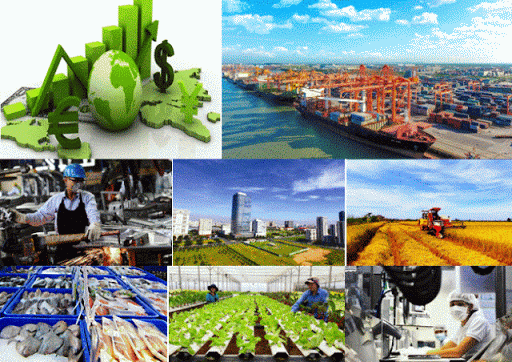According to the Bangkok Post, the COVID-19 pandemic has broken out strongly globally and transmission rate is increasing. Vietnam is also struggling to cope with the COVID-19 outbreak again, after three months in which the whole country did not record any new infections among the community.
On August 12, Prime Minister Nguyen Xuan Phuc affirmed that the following 10 days would be an important period for Vietnam to fight against the pandemic. The country has received a lot of praise from the international community for its ability to prevent the first wave of COVID-19.

Photo for illustration (Source: tapchitaichinh.vn)
The second wave of COVID-19 pandemic started on July 25 in the central city of Da Nang, bringing fears that tourism and many other key economic sectors could be seriously affected. However that's not necessarily bad news for Vietnam. Many prestigious international organizations have stated that Vietnam is one of the few countries that will achieve positive growth this year. That depends on a resurgence of global trade, which was well shaped before.
Firstly, the EU-Vietnam Free Trade Agreement (EVFTA) officially came into effect on August 1. This is considered a great lever for Vietnam's exports, helping to diversify markets with many new export products, especially those that Vietnam has many competitive advantages.
According the Reuters, the EVFTA will eliminate 99% of tariffs on goods exchanged between the two sides, helping Vietnamese exporters access the market of 18 trillion USD.
The Government of Vietnam forecasts, Vietnam’s exports to the EU will increase 42.7%, within the next 5 years. The World Bank (WB) also said that this historic agreement may increase Vietnam's gross domestic product (GDP) growth by 2.4% and increase Vietnam's total exports by 12% by 2030. Accordingly, Vietnam will enjoy tariff preferences in the EU under the Generalized System of Preferences (GSP). In addition, the EU is also one of the largest foreign investors in Vietnam, accounting for about half of the total foreign direct investment (FDI) capital.
One of the items benefiting the most from EVFTA is apparel, which accounts for about 10% of the country's exports. The EU is Vietnam's second largest apparal market, behind only the US, accounting for 15% of total apparel export revenue last year.
"EVFTA is a comprehensive, high-quality agreement that helps Vietnam become an important link in the global manufacturing supply chain," the Bangkok Post affirmed.
Besides, EVFTA is the second agreement signed by the EU and an ASEAN country, after Singapore. As a whole, Southeast Asia is the EU's third largest international trading partner, after the US and China. With ASEAN’s accumulated FDI of 374 billion USD by the end of 2017, the EU wishes to pursue an FTA with ASEAN in general, but has not yet achieved expected results. Negotiations began in 2007 and ended in 2009 when member countries chose their own path, accelerating the process of bilateral negotiations.
According to many experts, the agreements signed between the EU and Vietnam and between the EU and Singapore could be detrimental to other ASEAN member countries. If the EU increases capital investment in Singapore or Vietnam in the field of automotive industry, it will create a competitive position with Thailand, while the country is leading in the region in this field.
However, the EVFTA also opens up to the EU a new vision of growing opportunities in Southeast Asia.
The agreement potentially becomes a catalyst for new negotiations between the EU and ASEAN.
In addition, Vietnam also benefits greatly from the "China Plus One" strategy (a business strategy which avoids only investing in China, diversifying business to other countries). Accordingly, investors in China transfer and expand to other countries (including Vietnam) to reduce labor costs, enhance market access. A number of multinational companies such as Apple, Samsung and Nintendo have begun moving their production facilities or seeking material supplies in Vietnam. It can be seen the large industrial zones of electronic equipment and consumer goods in Vietnam are "delicious cakes" for global manufacturers.
However, Vietnam also faces two challenges. First, Vietnam's seaport infrastructure is less developed than other countries in the region. Second, Vietnam is short of highly skilled human resources. However, with the direction and the right decisions of the government, Vietnam is confident to make good use of opportunities, as well as turn difficulties into opportunities, to move towards deeper integration into international trade, contributing to the national economic recovery after the pandemic./.